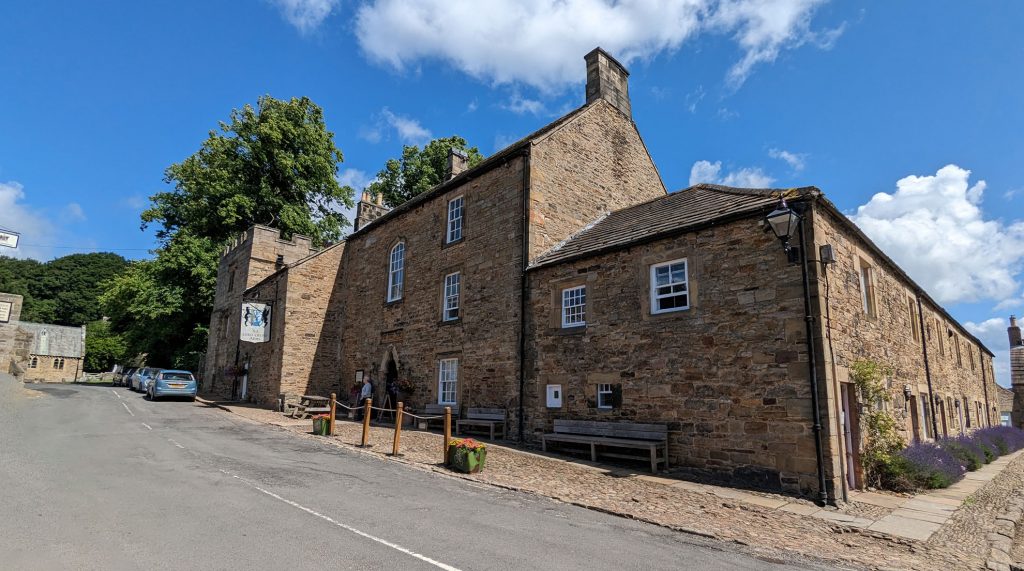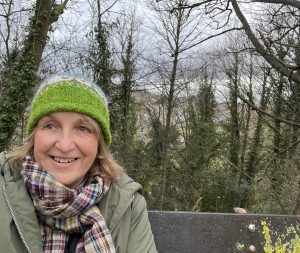beautiful blanchland
‘The prettiest village in the north of England’, ‘a fairy tale in the fells’, ‘a chocolate box village’ – some of the many descriptions of Blanchland, County Durham.
This ancient village is four miles away from Hepple Hill Cottage. Turn left out of the drive and you’ll be there in under 10 minutes.
The name Blanchland comes from the French canons who lived and worked in the Abbey and wore white habits. Blanc or blanche is French for white and so maybe that’s where the name came from. The Abbey was founded by Walter de Bolbec in 1165 and King Edward III visited during a campaign against the Scots in 1327. This royal visit and feeding hundreds of hungry soldiers emptied the coffers at the monastery and the monks were poor for hundreds of years before the monastery was dissolved by Henry VIII in 1539.
The village was bought by the Bishop of Durham, Nathaniel Lord Crewe in 1708 and on his death in 1721 Blanchland became part of charitable trust established by his will and this still exists today.

the lord crewe
As well as being very pretty and set in the beautiful countryside, Blanchland has much to offer a visitor. There is a play park and recreation field by the river and riverside walks to Baybridge (only a mile away) and Pow Hill Country Park by Derwent Reservoir (a more ambitious four miles). There are many beautiful gardens and allotments in the village which are easily viewed from paths. There seems to be several expert Dahlia growers in the area.
The Lord Crewe Arms, in the centre of the village, dates back to the original Abbey. It is full of atmosphere with hidden stairways and stone flagged floors. There is an enormous fireplace with a priest’s hole above. Legend has it that General Tom Forster hid there during the 1715 Jacobite rising. The hotel also has links to famous poets and composers. Philip Larkin is said to have dined here in the 1960s and W H Auden, who was a frequent visitor to the North Pennines, is quoted as saying in 1954: ‘It is a number of years now since I stayed at the Lord Crewe Arms, but no other spot brings me sweeter memories.’ English composer Benjamin Britten, famous for his opera Peter Grimes and his War Requiem, also stayed at what is one of the oldest hostelries in the country.
As is befitting for such an old building, The Lord Crewe has two ghosts. Dorothy Forster was the sister of Tom Forster who hid in the fireplace. She is said to appear in one of the bedrooms imploring who is there to take a message to her brother in France. A monk in a white robe has also been seen disappearing into the fireplace and in one of the bedrooms. An American guest is said to have woken up to see the monk in her bedroom and when she reached out to touch him, he felt solid! Fortunately, when she withdrew her hand he disappeared into thin air. The other sighting of a ghostly monk was by our electrician Jeff so I have heard the story first hand. I have to admit, I remain unconvinced.
The Lord Crewe is a very popular place for a meal and a drink. The Sunday lunch, which is served on a large platter to share, is excellent and booking is a must.
The White Monk tearooms is a good choice for lunch, snacks and teas. Set in the old schoolhouse, it has lots of character and gets rave reviews on Tripadvisor.
People travel from all over the world to see this special village. While you are staying at Hepple Hill Cottage, you are practically a neighbour. Blanchland has to be one of the ‘must see’ places during your stay.
